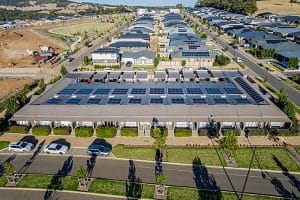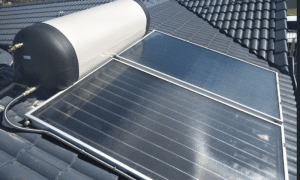The ACT Government has narrowed down the field for the nation’s first large scale solar auction to 22 proposals from 10 different developers for the first 20MW to be allocated under its program – regarded as the most significant development for the large scale solar industry in Australia to date.
The proposals have been chosen from 49 submissions, and a preliminary list of 29 that were deemed to meet the requirements of “pre-qualification” – that will enable the government to choose a winning tender or tenders by August.
Under the ACT government’s scheme, the price to be paid for electricity generated from the solar farms will be set by a competitive bidding process – a system that is proving popular in Europe, China, the Americas, and South Africa.
The auction is considered more effective at setting a competitive price than a fixed price tariff set by a government, or even a grants-based scheme, and the ACT solar auction – although small – is being viewed as a critical development in a sector that hopes to be a multi-billion dollar a year industry in Australian within the next five years.
So far, only on large scale project has begun construction in Australia – a 10MW facility in Western Australia that is being supported by a grant from the state government and equity from Verve Energy and General Electric.
But the grant funding process that has been used in programs such as Solar Flagships is seen as slow and cumbersome, and the ACT scheme is expected to elicit the current “market price” for large scale solar, and could set the template for more widespread deployment in Australia.
The results of a a similar, but much larger auction in South Africa, were announced earlier this week, when 417MW of solar PV facilities were awarded at an average price of 19.9c/kWh – down 40 per cent from an earlier auction held just five months earlier.
Given that the bidders for the ACT auction will be able to access renewable energy certificates, which are worth around $40/MWh – the South African result suggests that the ACT auction could deliver bids of around 15c/kWh or even lower. (The retail electricity price paid in the ACT is 16c/kWh). Some auctions in China and California have set lower prices, but these include the impact of tax credits and other incentives.
“This project will take advantage of the large drop in the cost of solar module prices which has occurred over the last couple of years and I am confident Canberrans will receive a good outcome from this process at the most competitive price,” ACT Energy Minister Simon Corbell said in a statement. Globally, the cost of PV modules is estimated to have fallen 75 per cent in the last two years, the result of fierce price competition among module manufacturers, particularly in China.
Like the South African auction, Corbell said there had been strong interest from both local and international developers. The 22 proposals accepted into the shortlist represent 148MW of capacity – although only up to 20 MW will be allocated in the fast-tracked first round of bidding. The second round will allocate more capacity to make a total of 40MW. Up to 210MW of large scale renewable capacity could be auctioned off in a similar fashion in coming years.
But the ACT government faces an interesting choice in allocating the initial capacity – and because the scheme is so small it may create the same frustrations that Solar Flagships did – a lot of bids, but only one or two winners.
The ACT Government has vowed that at least two proposals will be chosen to make up the 40MW, possibly in response to fears that the local energy monopoly, Actew AGL, could dominate the tender. It is thought to have put forward at least one proposal, including a 20MW facility near Williamsdale.
There is speculation of at least one other large proposal in the 20MW range, while most of the others appear to be in the 3MW-8MW range, judging by the numbers released by the government. This means that the first 20MW stage may go to a single bidder, or be awarded to a bundle of smaller projects. The judgment will presumably be in the price, but a single winner in the first stage would mean that the 48 other proposals would have to cool their heals until next year.
The first round of bids – including price – are due to be filed in June, with the winner or winners announced in August. The solar industry – indeed the broader electricity in Australia – will be watching with interest.
“I am pleased to announce that 49 proposals were received during the prequalification assessment stage, demonstrating very strong interest from industry nationally and internationally in the process and of these, 22 have been prequalified. This will create a strong basis for competition in the next stage,” Corbell said.
“This decision takes Canberra one step closer to becoming Australia’s Solar Capital, and demonstrates the government’s commitment to deliver large-scale solar projects to the ACT community.”
Giles Parkinson is the founder and editor of RenewEconomy.com.au, a website providing news and commentary on cleantech, climate and carbon issues. He is a journalist with three decades experience, a former Business Editor and Deputy Editor of the Financial Review, a columnist for The Bulletin magazine and The Australian, and the former editor of Climate Spectator.







































